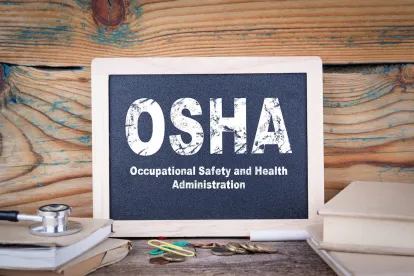Thank you to my colleague, Jonathan Schaefer, for this post. Jon focuses his practice on environmental compliance counseling, occupational health and safety, permitting, site remediation, and litigation related to federal and state regulatory programs.
OSHA recently announced that it is considering whether it should revise the Control of Hazardous Energy (Lockout/Tagout (LOTO)) standard to accommodate recent technological advances concerning control circuit-type devices. The LOTO standard (29 CFR 1910.147(a)(1)(i)) covers the servicing and maintenance of machines and equipment in which the unexpected energization or start-up of machines or equipment, or release of stored energy, could harm employees.
The LOTO standard currently requires that all hazardous energy from power sources and energy stored in the machine itself be controlled using energy isolating devices (EIDs) when an employee is performing servicing or maintenance of a machine or equipment. OSHA’s definition of EIDs excludes push buttons, selector switches, and other control circuit type devices.
The LOTO standard was issued in 1989. OSHA recognizes that, at least in some circumstances, as a result of advances in technology since 1989, control circuit type devices may be at least as safe as EIDs. In recent years, OSHA has granted at least one company a variance to the LOTO standard allowing the company to use control circuit type devices.
OSHA may also consider changes to the LOTO standard that address hazardous energy control for the robotics industry and new robotics technologies as employers are increasing the use of robots and robotic components in the workplace.
OSHA is interested in better understanding how employers have been using control circuit devices. Among other information, OSHA would like employers to provide information about the following areas:
-
types of circuitry and safety procedures in use;
-
limitations of their use, to determine under what other conditions control circuity-type devices could be used safely;
-
new risks of worker exposure to hazardous energy as a result of increasing interaction with robots; and
-
whether OSHA should consider changes to the LOTO standard that would address these new risks.
OSHA has signaled that potential changes to the LOTO standard could not only result in increased safety in the workplace, but also have the potential to decrease compliance costs and increase productivity.
Comments should include data, where possible, as well as information on anticipated additional costs, or cost savings, associated with potential changes to the standards. Comments must be submitted on or before August 18, 2019.



 />i
/>i

